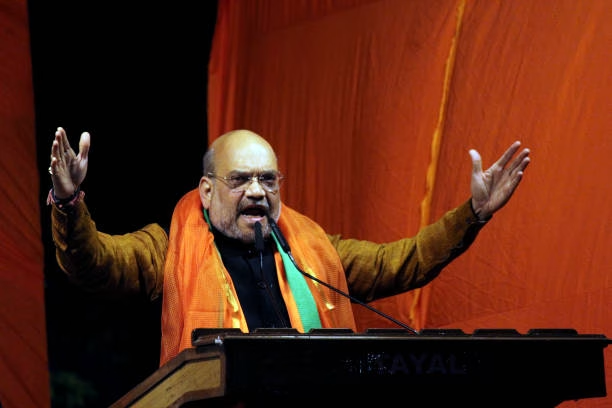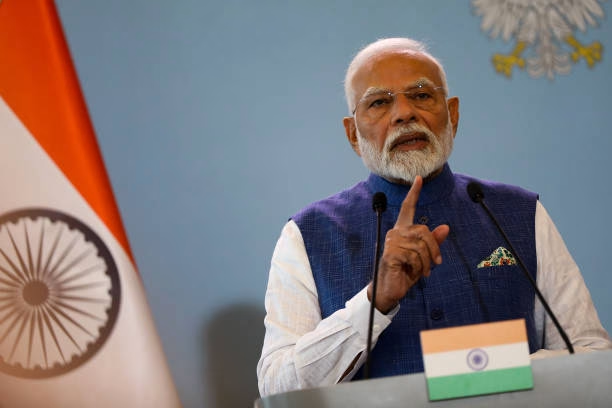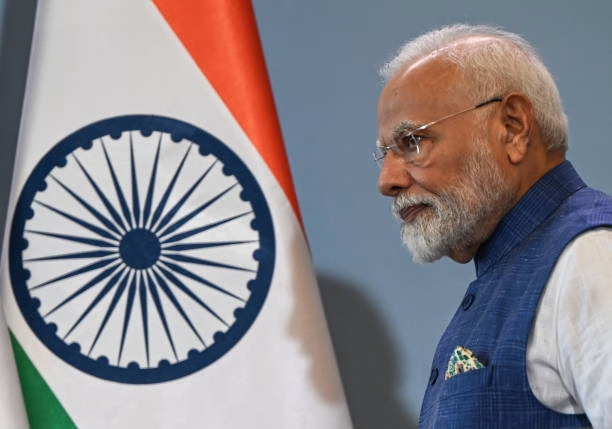Introduction: A Political Message With Economic Power
When Union Home Minister Amit Shah addressed a public gathering in Bastar, Chhattisgarh, his speech wasn’t just another political pitch. It was a message with global echoes, directed at none other than Donald Trump and the forces of global trade that have long shaped India’s economic choices.
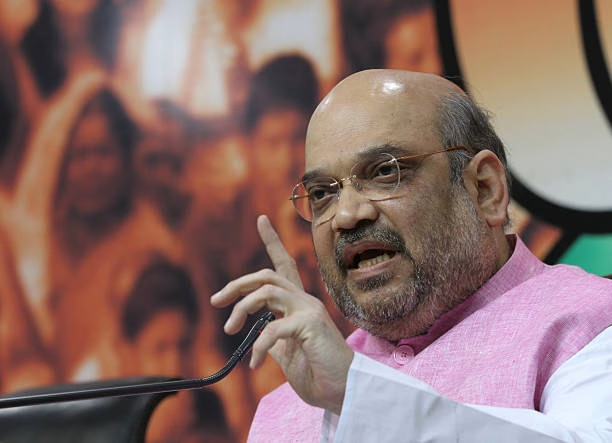
“If 140 crore Indians decide to embrace Swadeshi,” Shah said, “no one in the world can stop India from becoming an economic superpower.”
This wasn’t a rhetorical flourish. It was a strategic statement in response to a growing pattern of trade protectionism, global uncertainty, and India’s shifting ambitions under Prime Minister Narendra Modi.
In a world where tariffs, supply chains, and self-reliance are shaping the new economic order, Amit Shah’s Swadeshi call resonates deeply. It marks India’s reassertion of sovereignty in trade and production, reminding the world, and particularly the U.S., that the era of unilateral economic pressure is ending.
Also read, Zoho: The Indian Tech Giant Redefining Global SaaS, and the Vision of Founder Sridhar Vembu
The Context: Trump’s Tariffs and India’s Response
The timing of Shah’s remarks isn’t accidental. Former U.S. President Donald Trump, known for his aggressive economic policies, has once again triggered global debate with his talk of 100% tariffs on imported goods, especially targeting nations like India and China.
For decades, developing economies like India have relied on trade flexibility and technology imports from Western countries. But under Trump-style economics, “America First” often means “Everyone Else, Later.”
That’s where Shah’s counterpoint lands powerfully. His statement effectively says:
“India can and will chart its own path, with or without Western approval.”
This narrative fits squarely within the larger Atmanirbhar Bharat (Self-Reliant India) doctrine, a campaign that emerged after the pandemic, encouraging domestic manufacturing, innovation, and reduced dependence on imports.
So, when Shah warns Trump, he’s not just engaging in political theatre; he’s articulating a long-term strategy of economic nationalism, one that India believes can rival Western industrial dominance.
What ‘Swadeshi’ Really Means Today
For most Indians, Swadeshi evokes memories of the freedom struggle, spinning khadi, boycotting British goods, and empowering local industries. But Amit Shah’s use of the term isn’t nostalgic; it’s modern, pragmatic, and strategic.
In his Bastar speech, Shah framed Swadeshi as:
- A commitment to Indian-made products, from technology to textiles.
- A defense mechanism against global trade pressures.
- A moral and economic duty to strengthen domestic enterprises.
Today’s Swadeshi doesn’t mean isolation. It means competitiveness with self-control, integrating with the global market but retaining autonomy. It’s about manufacturing in India, for India and the world.
The Trump Factor: Provocation or Opportunity?
Trump’s renewed push for tariffs, reportedly 100% on pharmaceuticals and branded goods, was seen as a provocation in Indian circles. Yet, Shah’s response turned that provocation into opportunity.
His “warning” carried an undertone of confidence:
“You impose tariffs. We’ll make our own. And our people will buy them.”
It’s a sentiment that resonates strongly with India’s middle class and entrepreneurs. Over the past few years, government policies like Production-Linked Incentives (PLI), Make in India, and Digital India have been building the foundation for exactly this kind of self-reliant ecosystem.
By invoking Swadeshi in the context of Trump’s trade politics, Shah transformed what could have been a reactionary stance into a rallying cry for resilience.
Economic Nationalism: The Ideology Behind the Message
Amit Shah’s Swadeshi call is more than an economic statement; it’s an ideological position. The Rashtriya Swayamsevak Sangh (RSS), of which Shah has long been a key ideological ally, has historically promoted Swadeshi economics as a pillar of cultural pride.
The underlying idea:
India’s strength lies in its villages, crafts, and enterprises, not in Western consumerism or dependency.
In this sense, Shah’s statement is a continuation of India’s civilizational assertion, blending political will with economic autonomy.
However, what makes it powerful today is data: India is now the fifth-largest economy in the world, with manufacturing, IT, and startup ecosystems that can realistically compete globally.
Swadeshi is no longer about protection; it’s about projection, projecting India’s capability on the global stage.
From Khadi to Semiconductors: The New Face of Swadeshi
In the 1940s, Swadeshi was about spinning khadi and rejecting colonial imports. In 2025, it’s about semiconductors, AI, defense tech, and digital sovereignty.
India’s industrial policy under Modi has expanded Swadeshi to include:
- Electronics manufacturing: Apple, Samsung, and Micron now assemble products in India.
- Defense production: India is manufacturing its own fighter jets and drones.
- Pharmaceuticals: Indian generics are a global lifeline.
- Space & technology: ISRO and private players like Skyroot are redefining what “Made in India” means.
Amit Shah’s message amplifies this evolution, Swadeshi as an engine of innovation, not just self-preservation.
Why Bastar? The Symbolism of the Speech Location
Shah’s choice of Bastar, a tribal region with deep cultural and spiritual roots, is symbolic. It connects India’s ancient identity with its modern economic mission.
By delivering his “Swadeshi warning” there, Shah reaffirmed that the economic narrative isn’t just urban, it’s about empowering rural and tribal India too.
In his words, India’s progress “must begin from its villages.” This mirrors Gandhi’s belief that economic independence starts from the grassroots, a sentiment that ties India’s political past to its industrial future.
Global Reactions and Market Implications
While U.S. policymakers haven’t formally reacted to Shah’s remarks, global media has noted the assertive tone of India’s leadership.
Analysts see the statement as:
- A signal of confidence that India can withstand foreign trade pressures.
- A warning that India’s market of 1.4 billion people cannot be ignored.
- A hint that New Delhi might use consumer behavior as a soft weapon in trade wars.
Economically, if even a fraction of India’s consumers shifts toward Swadeshi brands, the impact on global supply chains could be significant, especially in sectors like electronics, pharmaceuticals, and fashion.
Swadeshi in Numbers: A Growing Reality
Several indicators show Swadeshi isn’t just a slogan:
- PLI Scheme Investments: Over ₹2.7 lakh crore committed by firms in 14 key sectors.
- Startup Ecosystem: India now has 110+ unicorns, many focused on domestic innovation.
- Make in India Exports: India’s manufacturing exports crossed $450 billion in 2024.
- Self-Reliance in Defense: 75% of defense procurement now sourced domestically.
- Digital Sovereignty: Over 85% of smartphones sold in India are now assembled locally.
These aren’t just statistics, they represent the architecture of Swadeshi 2.0.
Critics Weigh In
Economists and political observers have mixed views.
Critics argue that:
- Overemphasis on Swadeshi could risk protectionism.
- India still relies on imported components, especially in high-tech sectors.
- Trade restrictions might slow innovation if not balanced with openness.
However, supporters counter that Shah’s version of Swadeshi is not isolationist but assertive, about negotiating from strength, not retreating from global competition.
What It Means for India’s Middle Class
For India’s 400 million-strong middle class, Shah’s message carries both pride and practicality.
Choosing Indian-made goods is not just patriotic, it’s increasingly cost-effective and high-quality. Brands like Tata, Hero, boAt, and Patanjali have blended modern marketing with cultural appeal, turning Swadeshi into a mainstream consumer movement.
If this continues, India’s domestic consumption, already the world’s fifth largest, could become the single biggest driver of global economic growth by 2030.
The Political Layer: Swadeshi as a 2025 Message
Politically, the timing of the statement aligns with India’s pre-election climate. The Modi government is emphasizing national pride, economic strength, and cultural identity, all under the broad umbrella of Viksit Bharat (Developed India).
Amit Shah’s Swadeshi warning to Trump, then, serves multiple goals:
- Rallying domestic sentiment around self-reliance.
- Reinforcing India’s image as a global economic force.
- Drawing a clear line between Western dependence and Indian confidence.
In short, it’s political messaging with deep economic teeth.
Swadeshi vs Globalization: The Balancing Act
The challenge for India now is maintaining the balance.
Can India remain open to foreign investment while nurturing homegrown giants?
Can it promote Swadeshi without slipping into protectionism?
Thus far, the government’s approach seems nuanced, “open but not vulnerable.”
India continues to invite global investment but on its own terms, insisting on local manufacturing, data localization, and equitable trade partnerships.
Looking Ahead: Swadeshi as a Global Statement
Amit Shah’s warning wasn’t just for Trump; it was for the world.
In essence, he told global powers:
“You can’t bully a nation of 1.4 billion consumers anymore.”
That statement redefines India’s place in global economics. For decades, India was seen as a developing market dependent on imports. Today, it’s a consuming superpower, capable of dictating terms and shaping trends.
The Swadeshi message, therefore, is both defensive and declarative, a declaration that India’s economy is no longer fragile or peripheral but central to the global system.
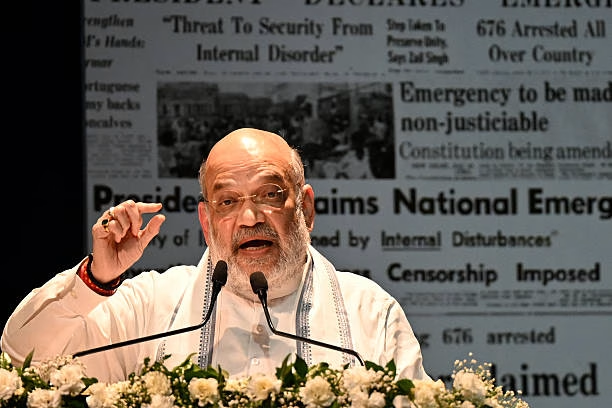
Conclusion: From Policy to People
Amit Shah’s Swadeshi warning to Donald Trump may have begun as a political statement, but it’s now a manifesto for a generation.
It fuses India’s spiritual philosophy of self-sufficiency with the modern reality of global economics. It challenges both policymakers and consumers to rethink what “Made in India” means, not just as a label, but as an identity.
If 140 crore Indians truly embrace that vision, India won’t just respond to global trade policies, it will rewrite them.
That’s the deeper meaning of Shah’s words:
“If 140 crore people embrace Swadeshi, no one can stop India’s rise.”
It’s both a warning and a prophecy, and one that might well define the next chapter of India’s economic journey.
